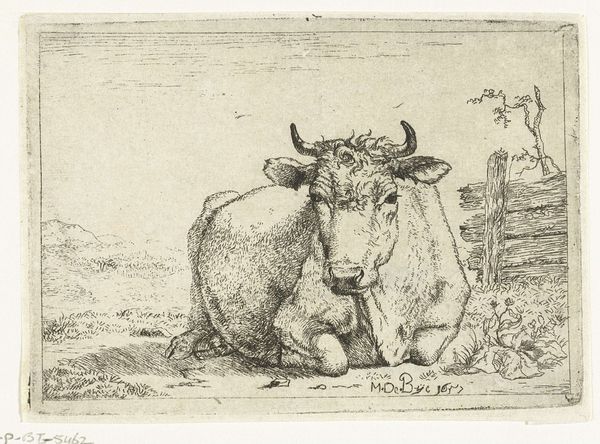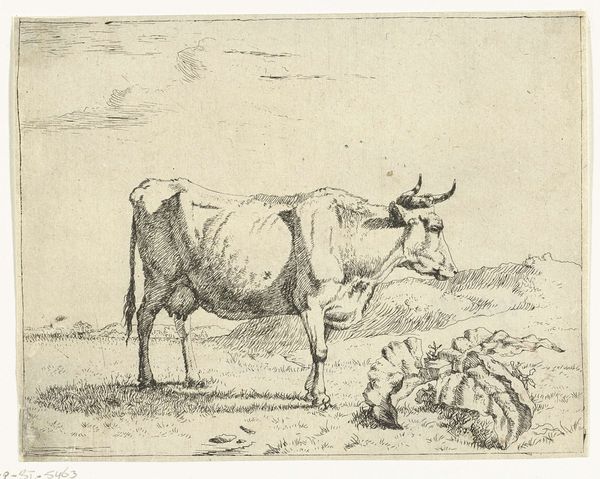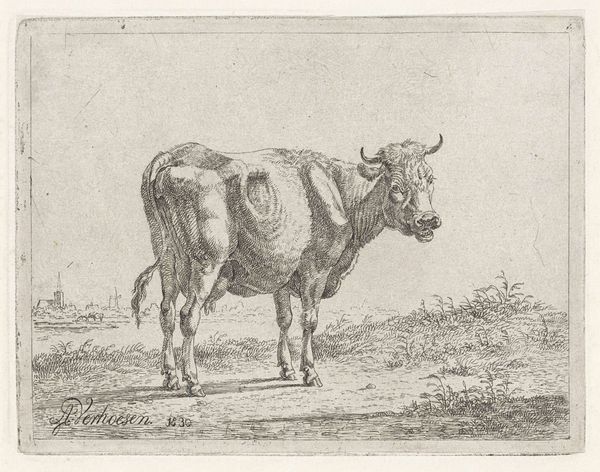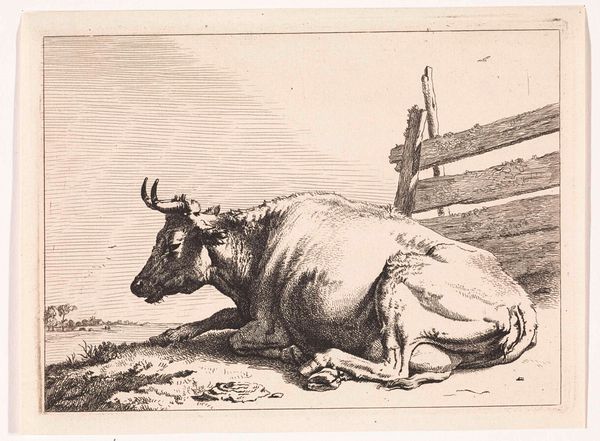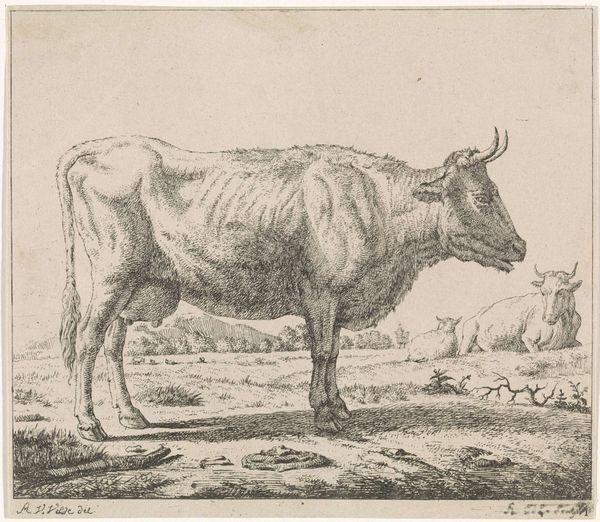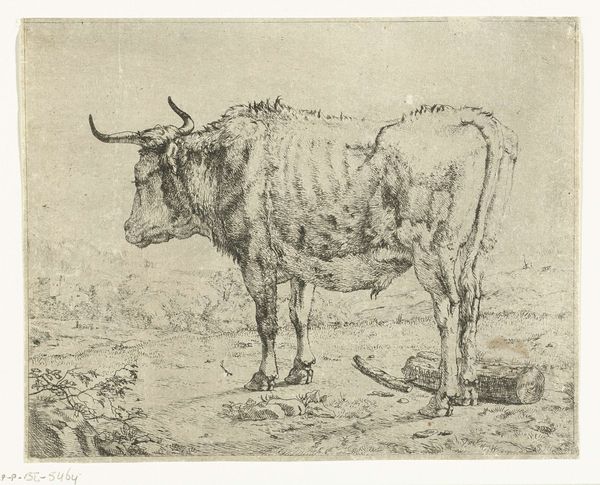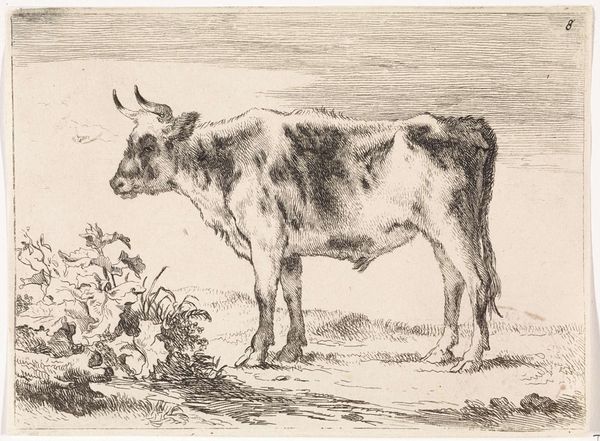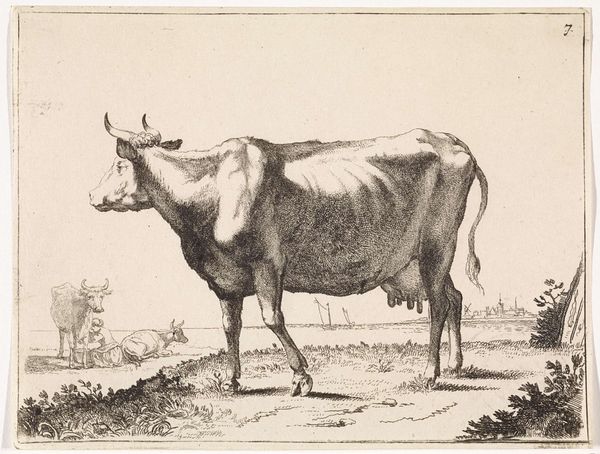
drawing, paper, engraving
#
drawing
#
dutch-golden-age
#
landscape
#
paper
#
engraving
#
realism
Dimensions: height 103 mm, width 141 mm
Copyright: Rijks Museum: Open Domain
Paulus Potter created this etching of a recumbent cow by a fence, sometime in the mid-17th century. Potter was one of the most significant animaliers of the Dutch Golden Age, a period when the Netherlands saw unprecedented economic and artistic growth. His detailed depictions of animals, particularly cattle, elevated these creatures to the level of portraiture. In this etching, the cow isn't just an animal, but an individual with its own presence. During this period, the Dutch landscape and its livestock became potent symbols of national identity and prosperity. Land reclamation projects transformed the Dutch countryside, and the rise of a powerful merchant class led to a new appreciation for the pastoral. Potter’s work captures this shift, celebrating the beauty and economic importance of farm animals. We can consider how gender, too, played a role in this agrarian society. Cows, often associated with feminine attributes of nurture and sustenance, were central to the family economy. Feel the weight and warmth of the animal through Potter’s lines, and consider its place in the landscape and the broader culture.
Comments
No comments
Be the first to comment and join the conversation on the ultimate creative platform.
